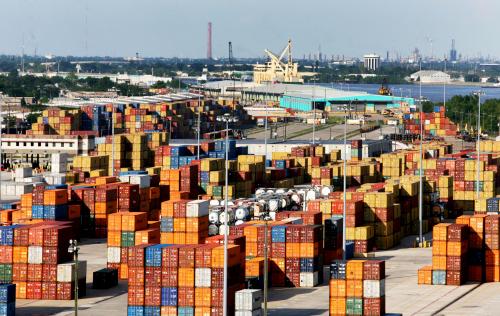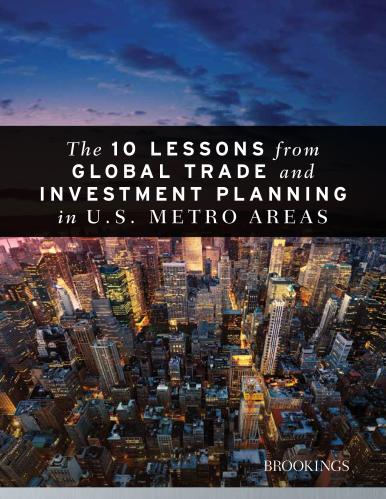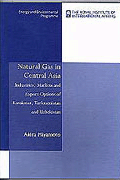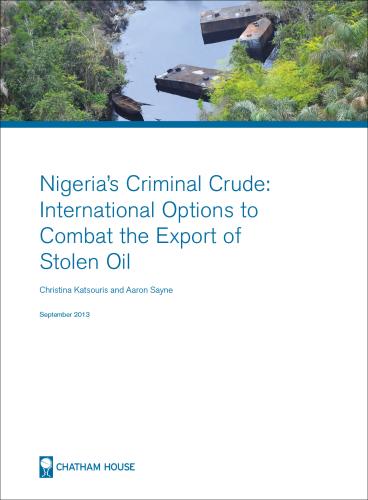Exports and foreign direct investment (FDI) are inextricably linked, as we’ve written about in several recent pieces: The economic clusters that generate exports also attract FDI; mergers and acquisitions account for the majority of FDI and the target firms tend to be exporters; most high-potential under-exporters and new FDI establishments are mid-market firms; and for metro areas, the best way to boost both exports and FDI is by working with existing firms.
Yet in most metros, exports and FDI—to the extent that they’re part of the economic development agenda at all—occupy different worlds. Typically, the main economic development organizations (EDOs) avoid exports altogether, leaving that work to smaller niche organizations that focus on trade assistance. On the other hand, regional EDOs do take charge of FDI recruitment as an extension of domestic business attraction, though these efforts are often sporadic and focused on landing new “greenfield” operations. This separation reflects a belief that exports and FDI are fundamentally different pursuits, in which export assistance means providing services within the region to help small firms, usually manufacturers, go abroad, while FDI means traveling abroad to recruit large firms to the region.
Now, however, economic development leaders are recognizing the fundamental connections between trade and investment. In response, regional EDOs in several metro areas are taking on both exports and FDI with equal commitment under the banner of an overarching integrated strategy. This may seem like little more than shuffling boxes around on an organizational chart, but in fact, it represents a major shift in thinking that takes a more expansive view of what both topics mean for long-term regional competitiveness and sustainability.
In Portland, Ore., for example, the region’s global strategy is organized around the concept of a cycle in which innovation creates exporters, which in turn draws FDI, which in turn spurs increased innovation. As such, Portland’s myriad efforts to stoke its emerging tech economy are seen as an early step in building an export and investment pipeline, even if the tactics—including placemaking initiatives to attract innovative workers and firms—don’t immediately appear relevant to exports or FDI. Columbus, similarly, recognized that imports are a precursor to FDI and part of a long-term cycle that leads to exports, which has raised the importance of small importers in its business retention and expansion activities. San Diego brought the export-focused World Trade Center into the Regional EDC and stopped using terms like “exports,” “imports,”and “FDI” to categorize their work, in favor of “international business”, which better reflects how companies (especially in the services sector) see global business as an integrated whole.
This trend may also be rising up to the state level: South Carolina recently announced the creation of a new state International Strategy and Trade Division that will focus equally on exports and FDI.
Another important, but less obvious, implication of this shift is that EDOs are demonstrating a willingness to work on topics that matter to the competitiveness of firms (and therefore the region), even if they’re not clear job creators. One of the reasons that exports and M&A have traditionally been left on the sideline is that they don’t immediately create quantifiable jobs in the way that recruiting a new business does, and therefore don’t directly contribute to EDO performance measurement. M&A is particularly problematic in that it raises fears of losing both jobs and locally engaged headquarters. But these concerns conflict with the realities of the marketplace and the needs of companies, which say that exports and M&A are crucial to their ongoing competitiveness, as they provide more diverse sales channels, scale to invest in R&D, and access to expertise and capital.
These are early steps by a few EDOs, and much remains to be learned as they experiment with new strategies and structures—a process that requires significant culture change. But in merging and mainstreaming these areas of work, regional leaders are making an important commitment to address the needs of existing firms and focus on the long-term viability of the regional economy, rather than structuring activities according to their own internal performance measurements.











Commentary
Metro areas merge export and FDI strategies
December 29, 2015